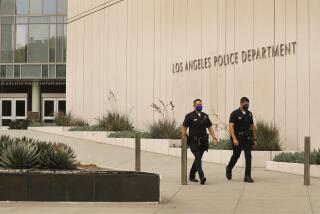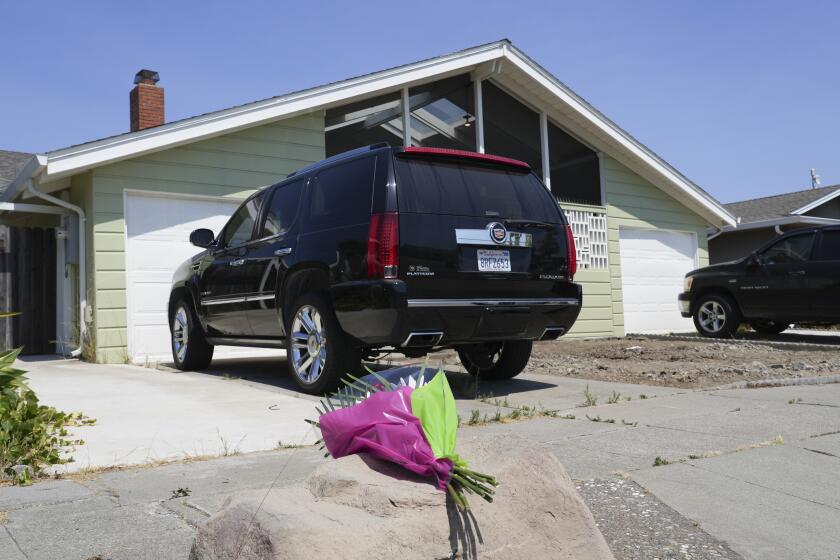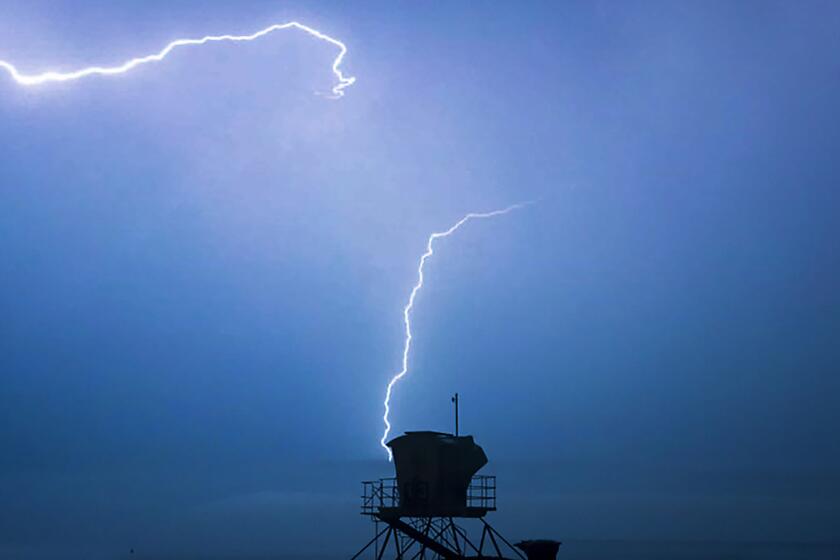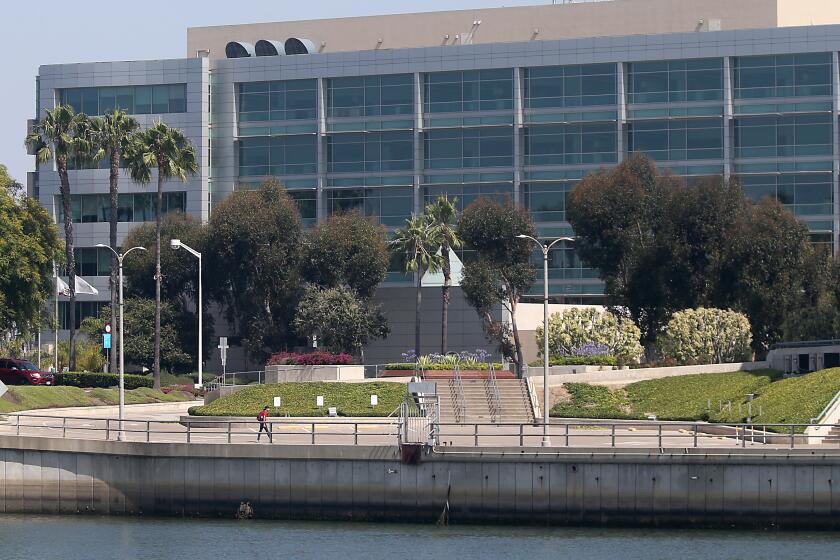‘Grey’s Anatomy’ crew member sues LAPD for racial profiling after traffic stop near set
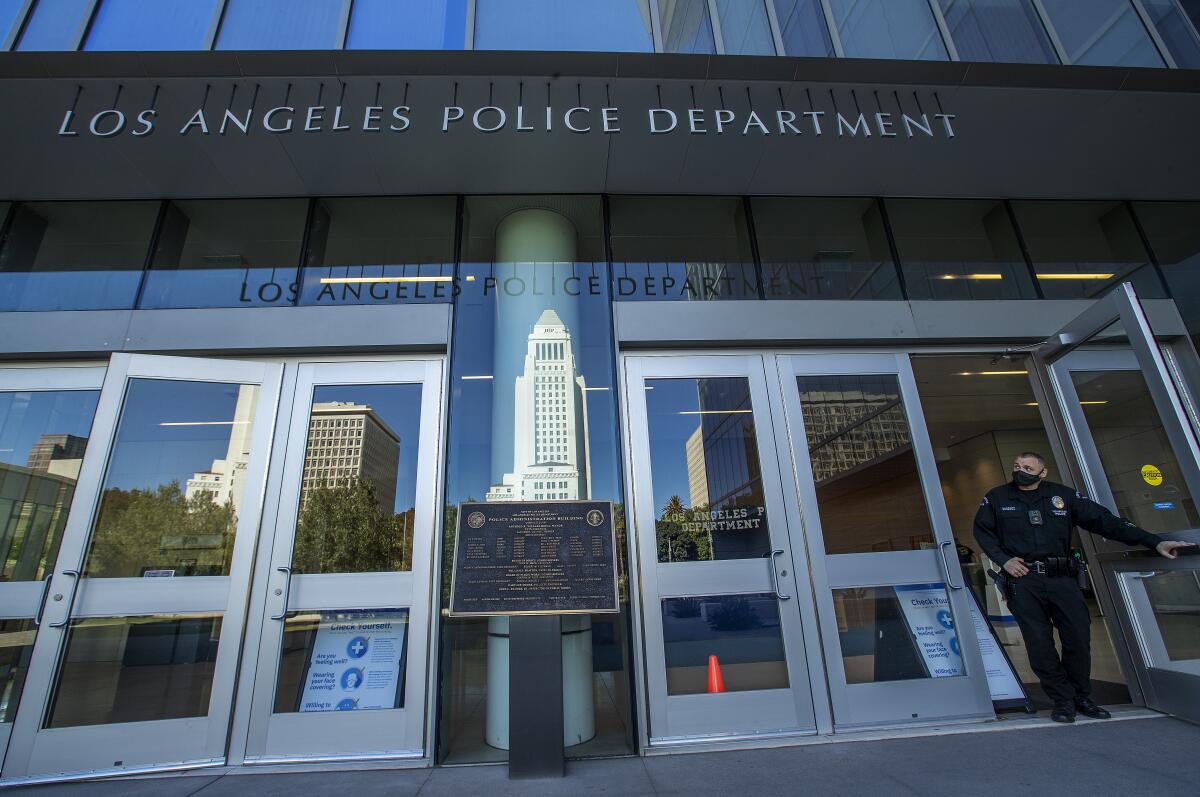
A Black member of a television production crew has sued the city of Los Angeles and members of its Police Department over a 2021 traffic stop in which he alleges he was racially profiled and held at gunpoint without cause.
Ernest Simon Jr., who worked as a shuttle driver for the hit show “Grey’s Anatomy,” says in the lawsuit that after the traffic stop LAPD officers told him an automated license plate reader had linked the plates of the vehicle he was driving to a stolen BMW sedan. Simon was driving a Ford van rented by Walt Disney Co.
Capt. Stacy Spell, a LAPD spokesman, declined to comment on the case because of the pending litigation.
Simon, 31 at the time of the 2021 incident in Tarzana, had just dropped other crew members at a nearby set and was driving back to a parking lot the show was using as its “basecamp” when officers began following him, the lawsuit states. He alleges the officers became suspicious of him because of his race and before the license plate reader erroneously flagged the car as stolen.
With the officers behind him, Simon pulled into the parking lot, where there were other similar vans. A security guard at the lot’s entrance told the officers that Simon was a crew member, his complaint states.
Nonetheless, the officers jumped out of their vehicle and approached Simon with their guns drawn, according to the lawsuit.
“Multiple LAPD police officers then forced Mr. Simon to lie prone on an asphalt lot at gunpoint for over 20 minutes, using an overwhelming and unjustified show of force against Mr. Simon that caused him to legitimately (and understandably) fear that he was going to be shot at his workplace in front of his co-workers for simply being a Black man in the wrong neighborhood,” the lawsuit states.
Simon alleges that he calmly tried to explain that he was a crew member driving a production vehicle, but the officers ignored him and instead called for backup, at which point more officers arrived in “seven speeding LAPD squad cars” and joined the others in training their guns on Simon.
As crew members tried to intervene on Simon’s behalf, they were told to “get out of the line of fire,” the lawsuit alleges. The officers searched the van and ignored another Black crew member who tried to tell them that Simon was his co-worker, according to the lawsuit.
Only after a white crew member intervened in a similar way did the officers let Simon off the ground, the complaint states.
Simon is alleging unreasonable search and seizure, racial profiling and excessive force, as well as a failure on the part of the city to properly train officers.
The lawsuit states the LAPD has done nothing to hold the involved officers accountable for their actions since the incident occurred in March 2021 and that Simon is suing in part to hold them accountable. He also wants $20 million in damages, the lawsuit says.
Investigations by The Times and the LAPD’s own inspector general in recent years have found that the LAPD stops Black and Latino drivers at disproportionate rates, despite being less likely to have contraband on them. The civilian Police Commission recently revised the department’s policies on traffic stops based in part on concerns of bias.
Other drivers have also sued the LAPD in recent years for officers holding them at gunpoint after wrongfully assuming the vehicles they were driving — including rented U-Haul trailers — were stolen.
Spell, the LAPD spokesman, said the department does not have a specific policy on officers drawing their guns on drivers “based solely on information in a database of stolen vehicles,” like those that license plate readers use. The department does have a policy that states officers “shall not draw or exhibit a firearm unless the circumstances surrounding the incident create a reasonable belief that it may be necessary to use the firearm,” Spell said.
Officers are also meant to holster their weapons immediately upon determining that such deadly force is not necessary, according to the policy.
More to Read
Start your day right
Sign up for Essential California for news, features and recommendations from the L.A. Times and beyond in your inbox six days a week.
You may occasionally receive promotional content from the Los Angeles Times.
